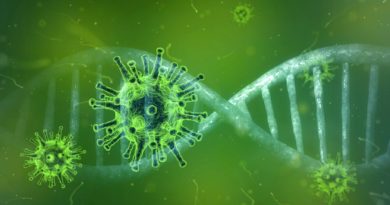Study finds ‘single largest driver’ of coronavirus misinformation to be Donald Trump

Of the flood of misinformation, conspiracy theories and falsehoods seeding the internet on the coronavirus, one common thread stands out: President Donald Trump.
That is the conclusion of researchers at Cornell University who analyzed 38 million articles about the pandemic in English-language media around the world. Mentions of Trump made up nearly 38 per cent of the overall “misinformation conversation,” making the president the largest driver of the “infodemic” — falsehoods involving the pandemic.
The study, to be released Thursday, is the first comprehensive examination of coronavirus misinformation in traditional and online media.
“The biggest surprise was that the president of the United States was the single largest driver of misinformation around Covid,” said Sarah Evanega, the director of the Cornell Alliance for Science and the study’s lead author. “That’s concerning in that there are real-world dire health implications.”
The study identified 11 topics of misinformation, including various conspiracy theories, like one that emerged in January suggesting the pandemic was manufactured by Democrats to coincide with Trump’s impeachment trial, and another that purported to trace the initial outbreak in Wuhan, China, to people who ate bat soup.
Also Read: US President Trump says coronavirus under control, ‘It is what it is’
But by far the most prevalent topic of misinformation topic was “miracle cures,” including Trump’s promotion of anti-malarial drugs and disinfectants as potential treatments for Covid-19, the disease caused by the coronavirus. That accounted for more misinformation than the other 10 topics combined, the researchers reported.
They found that of the more than 38 million articles published from Jan. 1 to May 26, more than 1.1 million — or slightly less than 3 per cent — contained misinformation. They sought to identify and categorize falsehoods, and also tracked trends in reporting, including rises in coverage.
For example, on April 24, a day after Trump floated — and was ridiculed for — the idea that disinfectants and ultraviolet light might treat Covid-19, there were more than 30,000 articles in the “miracle cures” category, up from fewer than 10,000 only days earlier. Trump drove those increases, the study found.
Also Read: US President Donald Trump’s coronavirus record is troubled at best
To those who have been watching Trump’s statements, the idea that he is responsible for spreading or amplifying misinformation might not come as a huge shock. The president has also been feeding disinformation campaigns around the presidential election and mail-in voting that Russian actors have amplified — and his own government has tried to stop.
But in interviews, the Cornell researchers said they expected to find more mentions of conspiracy theories, and not so many articles involving Trump.
Public health experts know that clear, concise and accurate information is the foundation of an effective response to an outbreak of infectious disease. Misinformation around the pandemic is “one of the major reasons” the United States is not doing as well as other countries in fighting the pandemic, said Dr. Joshua Sharfstein, a vice dean at the Johns Hopkins Bloomberg School of Public Health and a former principal deputy commissioner at the Food and Drug Administration.
“There is a science of rumors. It’s when there is uncertainty and fear,” said Sharfstein, who teaches on public health crisis communications. In the absence of treatments or vaccines, he said, honest and consistent messaging is essential.
Also Read: Donald Trump admitted playing down coronavirus danger, says new book
“This is what we need to save lives,” he said. “If it’s not done well, you get far more infections and deaths.”
The Cornell Alliance for Science, which spearheaded the study, is a nonprofit devoted to using science to enhance food security and improve environmental sustainability. One of its aims is to promote science-based decision-making. Evanega and a Cornell colleague, Mark Lynas, partnered with media researchers at Cision, a company that performs media analysis, to conduct the study. Evanega said the study was being peer-reviewed by an academic journal, but the process was lengthy and the authors withdrew it because they felt they had compelling public health information to share.
The researchers sought to identify all mentions of misinformation in “traditional media” — including in The New York Times and other major news outlets. They included fact-checking articles that corrected misinformation in their total tally. But fact-checking articles accounted for only 16.4 per cent of those that included misinformation, “suggesting that the majority of Covid misinformation is conveyed by the media without question or correction,” the authors wrote.
The study found that conspiracy theories, when lumped together, accounted for 46 per cent of the misinformation mentions. Among those theories was one that emerged in early April suggesting that Dr. Anthony Fauci, director of the National Institute of Allergy and Infectious Diseases and a respected voice on the pandemic, was exaggerating deaths or was a beneficiary of pharmaceutical company efforts to find treatments and vaccines. To look for such stories, they examined social media hashtags, including #FireFauci and #FauciFraud.
The researchers identified more than 11,000 misinformation articles involving Fauci, as compared with more than 295,000 involving miracle cures. There were more than 40,000 articles that mentioned the purported Democratic hoax, and more than 6,000 mentioning bat soup, which was the topic of a video that made the rounds on social media in the winter.
*** This article has been archived for your research. The original version from Deccan Herald can be found here ***


